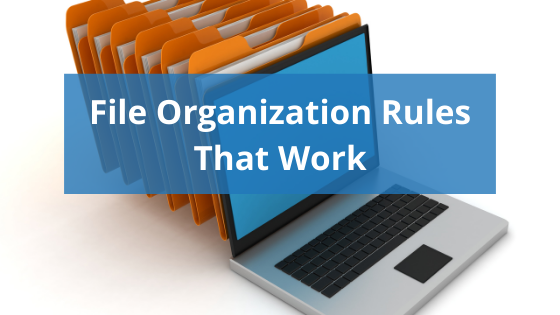It can be difficult to keep files organized and up-to-date for any organization. Each department, and even each person, can have a different way of naming, storing, and sharing files that makes it impossible for an outsider to find what they need. This is why it is important to create a file management system for your entire organization. There are a few key areas you should focus on to create a system that will work in the long run.
Where files are stored
While it seems reasonable to store files on personal devices and then share the final version out when necessary, this can create a lot of problems. If something happens to your device, someone edits the document after you’re done, or some other issue occurs it can be difficult to find the exact file you need and duplicate data can complicate your processes. By storing files in shared drives you can ensure everyone has access to documents and that backups are created in case of a crash.
Access rules and groups
Not everyone needs or should have access to financial data, HR files, or even marketing materials. By creating groups for each area of your business and restricting access to certain files you can make sure that your information remains secure and accessible.
Folders
Folders and subfolders are great tools for organizing and finding files. This may seem intuitive, but creating rules and templates for how folders should be organized can be beneficial. Maybe you run community programs and want to store information for each in a large folder with the program name, subfolders for each year, and more subfolders to store things like registration information, flyers and marketing materials, permits or vendor contracts, and more. When your folder for each program looks the same and has the same subfolder system it can be easy for your team to find the exact file they’re looking for.
File naming
File names are important, so they should be as descriptive and clear as possible. You should create a file naming convention that will be applied across your organization to keep things consistent and manageable. You should consider requiring dates to be included in file names so you can easily identify when the data was gathered as well as creating rules for naming structure, like using underscores instead of spaces between words.
Versioning and archiving
There are a lot of reasons why your organization might have different versions of documents saved. What matters most, though, is being able to find the correct one. You should consider setting up a subfolder specifically for finalized documents and have a separate place for previous versions of documents. You can also create an archive for older documents you may want to use as a reference later on or need to hold on to.
The most important part of organizing your files is sticking to your process once it has been determined. Outlining new rules can only go so far if everyone quickly slips back into their old methods and ways. Make sure you express the importance of this new system to your staff and lead by example with your own habits. There will never be a perfect way to store all of your organization’s documents, but you can find a structure that works and makes the process easier for everyone.






Leave a Reply